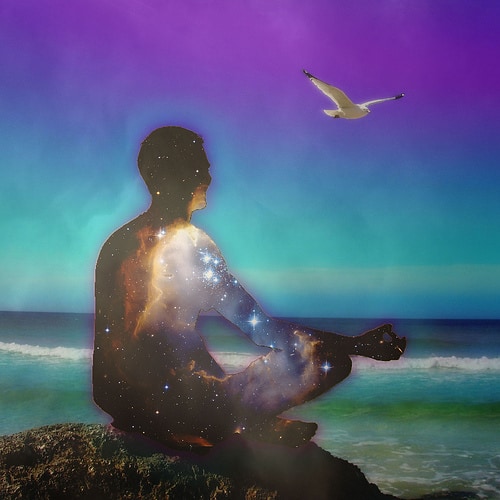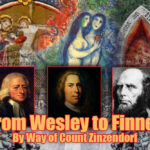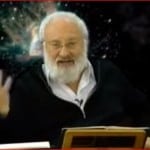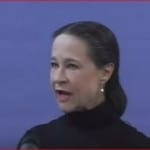Truthspeakers Weblog | 9/16/2016
IHOP (International House of Prayer) Promotes Centering / Contemplative Prayer
I recently had an email exchange with a friend of mine who is into the signs and wonders movement. She told me she was reading 5 books on how to interpret dreams. When I wrote back and remarked that one of the authors she was reading from was involved in creative visualization back in the ‘80’s, she sent me several emails explaining exactly how she visualizes things in prayer and how she prays. I then sent her some apologetics sites to read that described contemplative prayer and the dangers of the practice. She finally wrote and told me that she dismissed their criticisms because the Holy Spirit led her in how to pray, and she didn’t need a book to tell her what to do. I thought that this was very amusing, since she was reading books to teach her how to interpret dreams. Go figure, but that’s how it is with a lot of people. Even after you give them solid evidence about something they purposefully ignore it (to their own peril, I might add).
How easy it is for someone to be deceived! Having come out of a cultic church in the 1980’s that was headed by a very insecure man , I know that anyone can be brainwashed.
The following was left as a comment on my blog post “Is IHOP a Cult”. It is included here with the writer’s permission:
“Last week I was contacted by a parent whose son has been going to IHOP for the past year. We spoke on the phone – the father, myself AND the son.
The dad had questions since he’s been financially supporting his son while he’s been ‘doing the IHOP’ this past year. (I don’t know if the son had some major questions of his own or was basically just willing to sit and listen but he was on the call.)
I think the turning point in our phone conversation was when I explained exactly what centering prayer was. Then I explained ‘how’ to do it, ‘what’ to expect when entering ‘the silent place’ and ‘where’ it originated. That it WAS an occult practice.
Now the dad says, “(name omitted), are you doing this?”
Long pause…. “Uh huh………”
To all the IHOP supporters: those of us who are speaking out against IHOP are NOT haters of Mike Bickle or any of the speakers who are regarded as ‘really being up there’. What we ARE against is the deception. That very deception is what the body of Christ has been warned about numerous times in the New Testament.
What I do not want to see is anymore people getting sucked unto believing that “because Mike Bickle or Lou Engle or Allen Hood or Misty Edwards said it (or sang it) that ‘it is of God!’” Because they have bought into error and they’re spreading it to anyone who will listen.
‘TOUCH NOT GOD’S ANOINTED’ does not apply to the leaders at IHOP because what they are teaching is not anointed. It is error.” (thanks SP!)
I have written previously about Mike Bickle promoting the practice of contemplative prayer, so I won’t go into a long explanation of it. It is simply put, Transcendental Meditation with a Christian twist. You can read the previous post here.
“Contemplative Prayer—A mystical prayer practice that leads one into the “silence” but in actuality leads away from God.
Definition of Contemplative Prayer: As it is expressed in a modern day movement is mystically (i.e. based on a technique or method) in which one empties the mind of thought through repetition, usually of a word or phrase or focus on the breath. In this case the silence would be an absence of thought, all thought.
The purpose of contemplative prayer is to enter an altered state of consciousness in order to find one’s true self, thus finding God. This true self relates to the belief that man is basically good. Proponents of contemplative prayer teach that all human beings have a divine center and that all, not just born again believers, should practice contemplative prayer.”i
Here’s another definition I found online:
“The root of all prayer is interior silence. Though we think of prayer as thoughts or feelings expressed in words, this is only one expression.Contemplative Prayer is a prayer of silence, an experience of God’s presence as the ground in which our being is rooted, the Source from whom our life emerges at every moment.
Contemplative Prayer is the opening of mind and heart – our whole being – to God, the Ultimate Mystery, beyond thoughts, words and emotions. We open our awareness to God whom we know by faith is within us, closer than breathing, closer than thinking, closer than choosing – closer than consciousness itself.
Centering Prayer is drawn from ancient prayer practices of the Christian contemplative heritage, notably the Fathers and Mothers of the Desert, Lectio Divina (praying the scriptures), The Cloud of Unknowing, St. John of the Cross and St. Teresa of Avila. It was distilled into a simple method of prayer in the 1970’s by three Trappist monks, Fr. William Meninger, Fr. Basil Pennington and Abbot Thomas Keating at the Trappist Abbey, St. Joseph’s Abbey in Spencer, Massachusetts.” ii
The following definitions are from Wiki:
“ Christian mysticism, Contemplative prayer can refer to: repetitive chanting, breathing in a controlled manner or silent concentration to quiet the thoughts and feelings and commune with a spirit that some believe to be God.
Centering prayer, (Centering prayer’ is a popular method of contemplative prayer, placing a strong emphasis on interior silence.) which is sometimes called contemplative prayer, although “It is not contemplation in the strict sense, which in Catholic tradition has always been regarded as a pure gift of the Spirit, but rather it is a preparation for contemplation.” iii
“Christian mysticism is traditionally practiced through the disciplines of:
- prayer (including oratio, meditation, contemplation, and, in some forms of esoteric Christianity, invocation of the Holy Spirit as a means of manifestation;);
- fasting, broadly understood as self-denial in general; and
- service to others, broadly called almsgiving.
In the tradition of Mystical Theology, Biblical texts are typically interpreted metaphorically, for example in Jesus’ “Sermon on the Mount” (Matthew 5–7) the text, in its totality, is held to contain the way for direct union with God.” iv
“Mysticism (from the Greek μυστικός, mystikos, an initiate of a mystery religio) is the pursuit of communion with, identity with, or conscious awareness of an ultimate reality, divinity, spiritual truth, or God through direct experience, intuition, or insight. Mysticism usually centers on a practice or practices intended to nurture that experience or awareness. Mysticism may be dualistic, maintaining a distinction between the self and the divine, or may be nondualistic.”v
All the disciplines of “Christian” mysticism are promoted and practiced by IHOP. Here is a quote that includes the list from the recent IHOP OneThing 08 conference:
“It is the morning after our yearly onething conference here in KC. I truly believe that this conference was one of the most important moments in the history of our ministry. Over the past four days we have laid the groundwork for the coming ‘revolution’ of the Lord which will transition this age into the next. Last night I was privleged to witness one of the greatest moments in Christian ministry. We called the men and women at the conference to make a vow unto the Lord to position themselves as forerunner messengers to prepare the way for the coming of the Lord.
We called them to commit to a seven part ’sacred charge’ unto the Lord for the next years. Some of the points were ‘pray daily’, ‘fast weekly’, ‘live holy’, ‘do justly’, etc.”vi
THESE ARE THE EXACT SAME DISCIPLINES THAT ARE PROMOTED UNDER CHRISTIAN MYSTICISM! (see definition above). It is important to note here that this kind of prayer is the exact opposite to the kind of prayer that is taught in the New Testament by Jesus, who said to pray to “Our Father, WHO ART IN HEAVEN”
Here are a few direct quotes from Mike Bickle:
“The Protestant wing of the western church, which is a tiny percentage of the Body of Christ…, is nearly completely (98%) unaware that the Holy Spirit is restoring contemplative prayer—center stage—to the church… The Holy Spirit is restoring this precious jewel (contemplative prayer) to the body of Christ. This is the God ordained means of attaining the fullness of God.”
“Every one in the Body Of Christ is called to live lives of contemplative prayer…”
“Everybody is called to live in the contemplative lifestyle. Everyone! Everyone! Everyone! That’s one of the great strongholds we have to overcome (resistance to contemplative prayer).vii
Here is an explanation of the dangers of Centering Prayer from a Catholic web site:
“Many people assume centering prayer is compatible with Catholic tradition, but in fact the techniques of centering prayer are neither Christian nor prayer. They are at the level of human faculties and as such are an operation of man, not of God. The deception and dangers can be grave.
Centering prayer differs from Christian prayer in that the intent of the technique is to bring the practitioner to the center of his own being. There he is, supposedly, to experience the presence of the God who indwells him. Christian prayer, on the contrary, centers upon God in a relational way, as someone apart from oneself. The Christian knows a God who is personal, yet who, as Creator, infinitely transcends his creature. God is wholly other than man. It is also crucial to Christian prayer that God engages man’s whole being in response, not just his interior life. In the view of centering prayer, the immanence of God somehow makes the transcendence of God available to human techniques and experience.
Centering prayer is essentially a form of self-hypnosis. It makes use of a “mantra,” a word (or verse of scripture TS ) repeated over and over to focus the mind while striving by one’s will to go deep within oneself.The effects are a hypnotic-like state: concentration upon one thing, disengagement from other stimuli, a high degree of openness to suggestion, a psychological and physiological condition that externally resembles sleep but in which consciousness is interiorized and the mind subject to suggestion. After reading a published description of centering prayer, a psychology professor said, “Your question is, is this hypnosis? Sure it is.” He said the state can be verified physiologically by the drop in blood pressure, respiratory rate, lactic acid level in the blood, and the galvanic conductivity of the skin. Abbot Keating relates that, when they began doing the centering prayer workshops in the guest house, some of the monks and guests ” complained that it was spooky seeing people walking around the guest house like ‘zombies.”’ They recognized the symptoms but could not diagnose the illness.viii
Contemplative prayer brings you into a meditative state (like hypnosis) and changes your brain waves!
Everyone’s brain produces waves, which can be measured as electrical activity. There are 4 major classifications of brain waves and they range from the most active to the least active. They are: beta, alpha, theta and delta.
Beta is the state you are in when you are awake and are associated with normal waking consciousness. The front part of the brain is in operation where you are conscious and in a state of critical thinking. In beta you are most aware, conscious, alert, focused, and analytical. Beta waves are the fastest of the 4 kinds of brain waves.
The next stage, which is when your brain slows down, is a relaxed state called alpha. Where beta represents arousal, alpha represents non-arousal. Alpha waves are slower and higher in amplitude than beta. Taking time to relax after completing a task, taking a walk in a garden or meditating puts the brain into an alpha state. In alpha you are alert but not mentally processing anything.
The third stage is theta which has an even higher amplitude and slower frequency that alpha. The brain enters theta when you begin to day dream or engage in a repetitious activity, like highway driving. Theta is the stage we enter when we are in deep meditation or under hypnosis. Any repetitive movement or sound can take you into theta easily. ix This is the state where much of the subconscious mind lies. When we are doing tasks like brushing our teeth automatically, we are in theta.
And finally the delta state is what we enter into when we are sleeping where the brain waves are the slowest. x
EEG | Brainwave | State of Consciousness |
Beta | Fully Awake and Alert Generally associated with left-brain thinking activity – conscious mind | |
Alpha | Relaxed, Daydreaming Generally associated with right-brain thinking activity – subconscious mind – a key state for “relaxation” | |
Theta | Deeply Relaxed, Dreaming Generally associated with right-brain thinking activity – deeper subconscious to superconscious Access to insights, bursts of creative ideas – a key state for “reality creation” through vivid imagery | |
Delta | Dreamless Generally associated with no thinking – unconscious / superconscious Access to non-physical states of existence – a key state for healing, “regeneration” and “rejuvenation” |
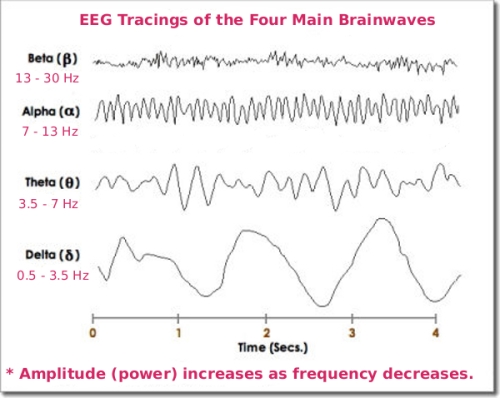
Some research has been done associated with the activities and benefits of other brainwave frequencies, such as Super Beta, Gamma, etc.
The lower your brainwave cps, the more is your awareness turned toward your subjective experience, toward your inner world and the more effectively are you able to use the power of your mind to create changes in your body. With each lower state you become more fully aligned with the source of power within you, with your unconscious, or if you prefer, with that part of you that is greater than you (your body).
Generally in Beta state, your attention is focused outward. In alpha it begins to turn inward, and in theta and delta it goes further and further inward. The deeper you go, the more effectively are you able to enter your subconscious. xi
Contemplative prayer, and its concurrent meditative state, brings the practitioner into the theta level of brain waves. It is in this state that the brain is most open to suggestions, which is why hypnosis works. In contemplative or centering prayer the person goes inward to the God within, rather then praying outwardly to “Our Father who art in Heaven”.
What is hypnosis?
“It is a trance state characterized by extreme suggestibility, relaxation and heightened imagination. It’s not really like sleep, because the subject is alert the whole time. It is most often compared to daydreaming, or the feeling of “losing yourself” in a book or movie. You are fully conscious, but you tune out most of the stimuli around you. You focus intently on the subject at hand, to the near exclusion of any other thought.” xii
“With meditative practice and self-hypnosis, you develop ability to remain conscious while getting progressively into deeper and deeper states. For example, a person without any mind training will tend to fall asleep when getting into theta state, while a person who has undergone some form of meditative mind-training will be able to be very deeply relaxed, yet conscious.” xiii
Whether you practice contemplative prayer or hypnosis you enter the theta state where you are conscious but highly suggestible! Therefore any church or group that promotes contemplative, centering or soaking prayer is actually bringing the practitioners into a hypnotic state where their minds are no longer using critical reasoning and they are highly open to suggestion. The more you practice this the easier it is to go into this trance state and it is often done with repetitive music which is now played in may modern churches. Normally when we are listening to a preacher and he says anything that we know is unbiblical, our brains will tell us this is untrue. But when the listeners are in the theta state the part of the brain that filters this information (critical thinking) is turned off!
Then the speaker can easily impart any teaching or twist any scripture they desire and the followers will believe it. This is a brainwashing technique used very effectively at places like IHOP.
Where did the modern contemplative movement come from?
THE MODERN CONTEMPLATIVE MOVEMENT BEGAN AROUND 1974 WHEN FR. WILLIAM MENINGER, A TRAPPIST MONK AT ST. JOSEPHS ABBEY IN SPENCER, MASS. FOUND THE BOOK THE CLOUD OF UNKNOWING IN THE ABBEY LIBRARY. THIS BOOK, WRITTEN IN THE 14TH CENTURY BY AN UNKNOWN AUTHOR “PRESENTED CONTEMPLATIVE MEDITATION AS A TEACHABLE, SPIRITUAL PROCESS ENABLING THE ORDINARY PERSON TO ENTER AND RECEIVE A DIRECT EXPERIENCE OF UNION WITH GOD”XIV
This form of prayer, called “centering prayer” in modern times (a term coined by Thomas Merton), has been around for centuries in the Catholic tradition and was practiced by the Desert Fathers and the ancient Catholic mystics.
IHOP lists 32 books under the heading “contemplative” in their online bookstore. Among the authors are:
1. Madame Jeanne Guyon— Mystic and Contemplative 1647-1717
“Here [the contemplative state] everything is God. God is everywhere and in all things.” —Madam Guyon
“May I hasten to say that the kind of prayer I am speaking of is not a prayer that comes from your mind. It is a prayer that begins in the heart…. Prayer that comes out of the heart is not interrupted by thinking!”—Madam Guyon, Experiencing The Depths of Jesus Christ p. 4]
“The school of mysticism that Guyon adhered to, sometimes called Quietism, was an extreme form of Roman Catholic mysticism that emphasized the cleansing of one’s inner life and included the belief that one could see Christ visibly. Before Guyon’s day, in the Middle Ages, this took strange forms in erotic “bride mysticism” with some visionaries believing they were married to Jesus. Guyon and the Quietists went further, into something called essence mysticism. They believed that their being was merged with God’s being and the two became one. This unbiblical idea survives today in the New Age and other non-Christian religions.xv
Guyon, thinking that God had always been in her heart, also believed that the fire would “devour all that was left of self” and that here would be no more “troublesome faults or reluctances,”14 bringing about a perfect, sinless state of life. xvi
Sinless perfection is also one of the main doctrines of Manifest Sons of God teachings.
2. Richard Foster author of Celebration of Discipline
“Foster is the leading evangelical-type pioneer of contemplative spirituality (also known as the spiritual formation movement) and is considered to be a key player in the emerging church movement” xvii
“A particular statement made by Guyon is very indicative of what contemplatives believe, and quoting it here can give a good example of the nature of mysticism. Guyon stated: “May I hasten to say that the kind of prayer I am speaking of is not a prayer that comes from your mind. It is a prayer that begins in the heart…. Prayer that comes out of the heart is not interrupted by thinking!”
This prayer of the heart that contemplatives such as Richard Foster teach is a “prayer” that eliminates distractions (thoughts) through meditative practices such as lectio divina, centering, ect. If a word or phrase is repeated or the breath focused upon, a type of self-hypnosis is achieved and the mind is rendered to a neutral state (the alpha state). But no where in Scripture are we instructed to produce a mystical state in order to hear God’s voice. On the contrary, divination (seeking to contact the spirit world through self-induced mystical means)is strictly warned against.”Keep in mind that the “fruit” of practicing contemplative prayer is a change in spiritual outlook. That change comes in the form of believing that God is in all things. All the “great” mystics have believed this. It is the heart of Satan’s lie because if he can convince man that he is divine, then he can convince him he needs no Savior” xviii
Other Ministries Promoting Contemplative Prayer:
In case you thought that contemplative / centering prayer was only being practiced by Pentecostals, think again! The Baptist General Association of Virginia’s partner organization, Woman’s Missionary Union of Virginia is sponsoring the Woman’s Silence Retreat 2009 with the theme of Celtic prayer.
According to the brochure, the goal of the retreat is for women to reconnect with God in a contemplative atmosphere.
Rev. Judy Bailey, facilitator of previous retreats says “there are times when we need to be alone so that we can connect in another way with the Spirit that both dwells within and transcends. In silence we may most effectively listen to God and to our innermost self. Without other voices to distract us we may focus our attention and understand more clearly what is there for us.” xix
i For more information see: http://www.lighthousetrailsresearch.com/ihop.htm
vii audio message Comtempolative Prayer pt1 by Mike Bickle
xiii IBID
xvi From: THE MINDLESS MYSTICISM OF MADAME GUYON by G. Richard Fisher http://www.pfo.org/mguyon.htm





